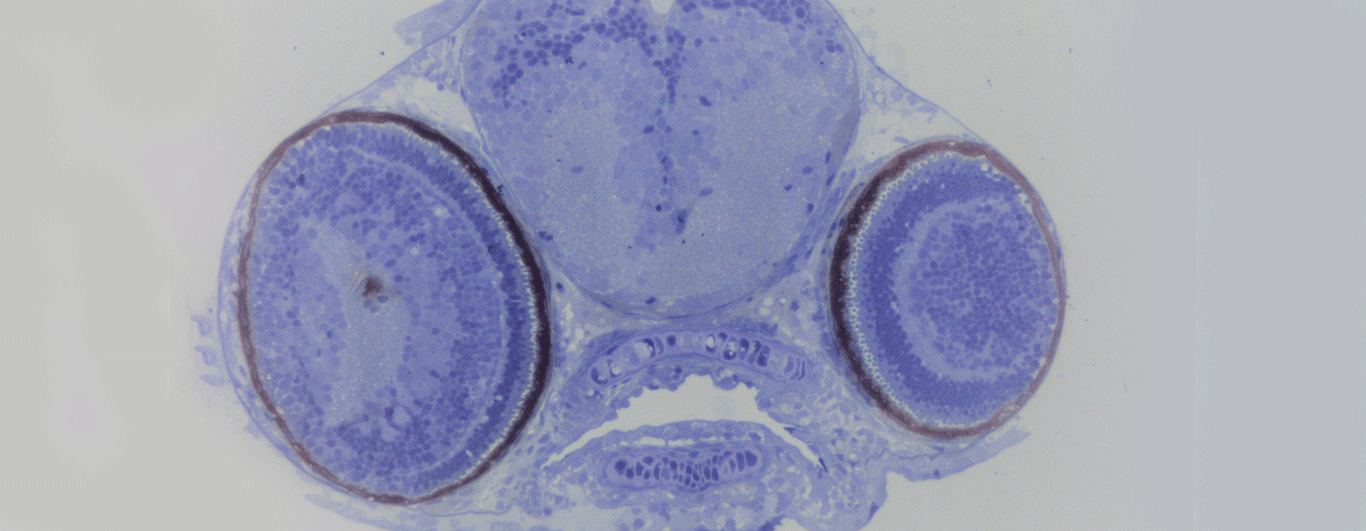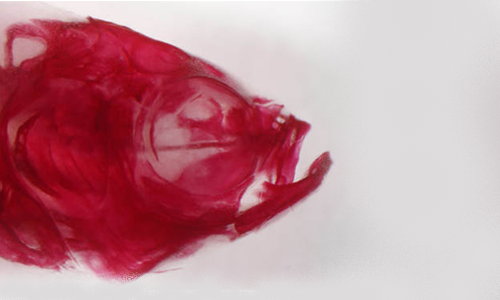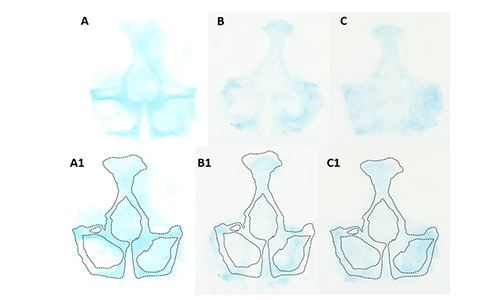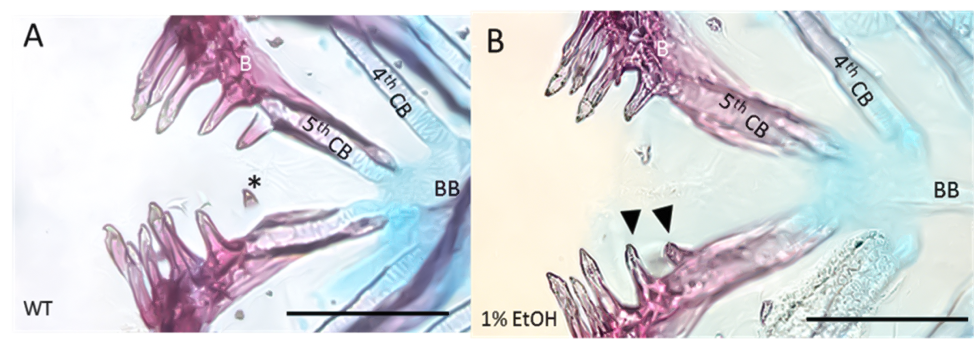



Cleft lip and/or cleft palate (CLP) is one of the most common birth defects. Epigenetic factors and gene mutations can cause disturbances in neural crest cell activities which can lead to CLP. Human genetic studies and animal models are useful in identifying the cellular and molecular mechanisms of palate development.


The bone morphogenetic protein (BMP) pathway signaling molecules are important for the epithelial-mesenchymal interactions during growth and the fusion of the palatal bones. Tissues and cell signaling mechanisms which regulate human and zebrafish palatal bone development are similar. Currently, we are investigating the morphogenetic process of zebrafish palatal bone development and role of BMP signalling pathway in zebrafish ethmoid bone development.


Acid-free double stained tooth-bearing pharyngeal bones of zebrafish at 20 days post-fertilisation. (A) Wild type (WT)tooth-bearing lower pharyngeal bones that have six teeth in each bone. These teeth are unicuspid and directly attached to the underlying bone. At this stage the teeth are fully mineralised. The asterisk indicates and exfoliated tooth. (B) Exposure to 1% alcohol (1% ETOH) at 10 hours post-fertilisation. The arrow heads show small, malformed and hypomineralised teeth. The scale bar is 100 µm. cbc4, forth ceratobranchial cartilage; cbc5, fifth ceratobranchial cartilage; cbb5, fifth ceratobranchial bone; bb, basibranchial.